Three ways WFP is helping to revitalize food systems in Eastern Africa
The world’s food systems are deeply flawed. These flaws affect us all, but most of all they affect the over 811 million people that go to bed hungry each night. The very existence of millions of hungry people is a clear sign that our food systems are not working well enough.
Twenty percent of the global population facing acute hunger lives in Eastern Africa, with Ethiopia, Sudan and South Sudan facing three of the top ten worst current global food crises.
The World Food Programme (WFP) already lives and breathes food systems across its work in Eastern Africa with activities, programmes and initiatives – from emergency relief to building sustainable livelihoods and ecosystems – touching virtually all elements of food systems, directly and indirectly.
Initiatives to transform food systems have been supported by WFP in countries including Kenya, Ethiopia, Somalia and Rwanda, and point to further opportunities for change. Here are three examples of WFP supporting improved food systems in the region.
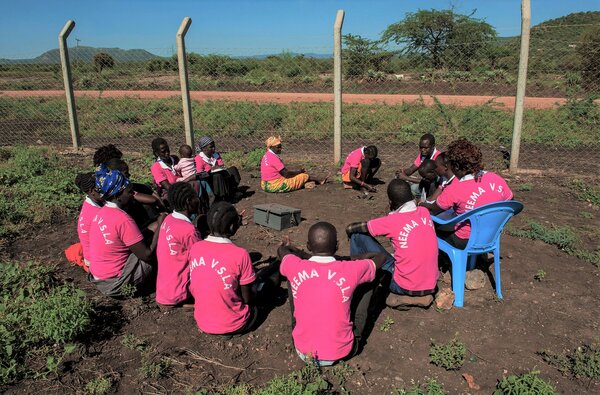
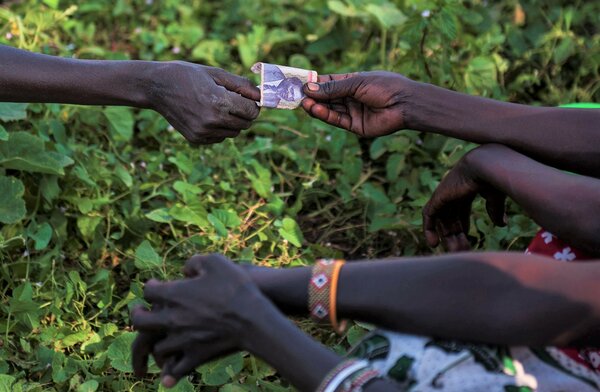
1. Improving access to finance
Giving rural communities simple ways to save and lend money promotes sustainable food systems, empowers women and youth, reduces dependency, and helps communities on a journey to self-reliance.
For rural communities in Kenya, access to credit from financial organizations is minimal. Farmers are often deemed too high risk for financial inclusion because they are largely dependent on rain-fed agriculture for their livelihoods, and faced with the increasing effects of climate change, irregular incomes and low levels of financial literacy.
Financial inclusion through Village Savings and Loan Associations (VSLA) is one of the many entry points through which WFP promotes sustainable food systems, builds community resilience and drives economic empowerment. Through savings and loans, communities access credit to buy materials for income generation from work other than just farming. This provides a vital safety net in case of emergencies.
In partnership with county governments, WFP trains ‘village agents’ to promote group savings schemes, which facilitate access to loans and credit to invest in productive livelihood activities.
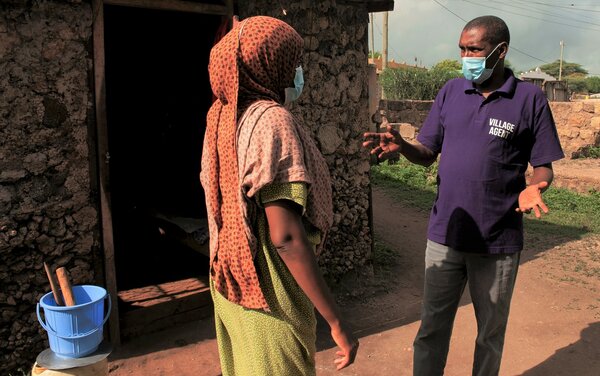
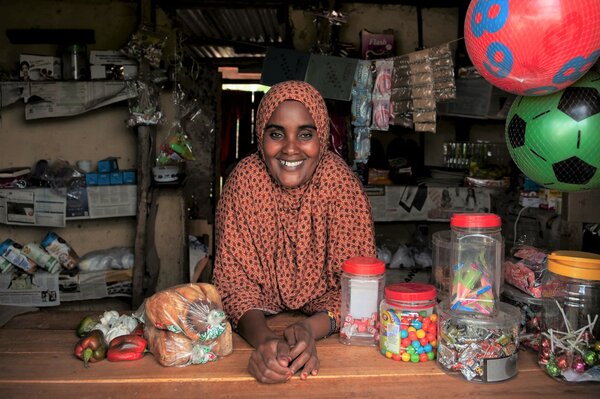
“When I got the money [from VSLA], I bought more stock for my shop and I also began selling construction sand. Nobody had this idea of selling sand and I have so far made 5,000 Kenya Shillings (US$45),” says Nasra Galgalo, a VSLA member in Isiolo County in northern Kenya.
WFP currently supports 845 VSLAs in seven arid and semi-arid counties in Kenya, who save money through purchasing shares. Eighty percent of people supported are women. The savings are invested in a loan fund from which members borrow.
At the end of each ‘cycle,’ usually a year, the accumulated savings, fines and service charge earnings are shared out among the membership, in proportion to the amount that each one has managed to save during the cycle.
The groups have so far saved over 5.6 million Kenya Shillings (US$51,000) in 2021, with over 2.7 million Kenya Shillings (US$25,000) taken in loans - providing members with short-term solutions to accessing financial services, crop insurance schemes and investing in drought-resistant crops which generate sustainable incomes.
“[Before VSLA] Women just used to stay at home. They did not have any kind of work and neither did they have the work mentality that they have now. Everyone now has a business thanks to VSLA,” says Nasra.
2. Supporting home-grown school feeding
Schools have a huge potential to transform local food systems. Rwanda is one of several countries in Eastern Africa implementing home-grown school feeding programmes. This model of school feeding is a game-changer for learners, households and countries due to the multiple returns on investment on learning, nutrition, health and local economies.
WFP supports the Government of Rwanda in providing daily meals to over 80,000 primary schoolchildren in 108 schools, in the four most vulnerable and food-insecure districts across the country.
Children are not just provided with a school meal but taught about good nutrition and hygiene, through mixed approaches such as traditional dances, poems and art. School vegetable gardens are also being established so that children learn about growing healthy crops. A 2017 cost-benefit analysis of the programme showed that every US$1 invested brought an economic return of US$4.80 from improved health, education and productivity.
Linking school feeding programmes to local food production capacity can have a transformative impact on food systems, by improving livelihoods of smallholder farmers through local procurement of food commodities and stimulating local farmers to produce more nutritious crops.
This contributes to predictable markets and incomes, supporting nutrition-sensitive supply chains, and encouraging the adoption of nutritious diets and lifelong healthy eating habits within local communities.
“WFP not only trains us, but also comes back to buy our produce,” says Immaculée, a farmer from Nyaruguru district, in Rwanda’s Southern Province.
“Before, getting buyers was not so smooth. What excites me most is knowing that WFP buys this produce to distribute in school meals. It feels good to know that your produce is reaching children in your very own community.”
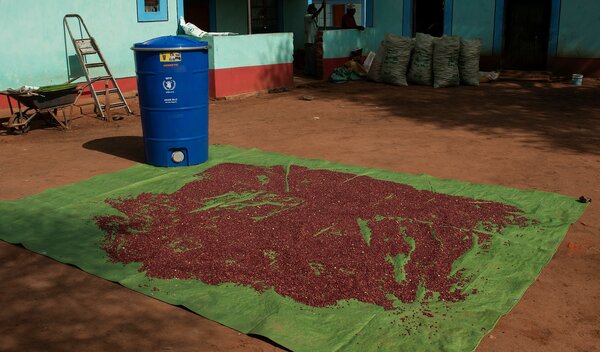
3. Reducing food loss
In developing countries, as much as 40 percent of produce is lost in the early stages of the food chain because of poor harvesting techniques and inadequate storage and cooling solutions.
In Sudan, where two-thirds of the population live in rural areas, post-harvest losses significantly affect the food security of smallholder farmers. The agricultural sector alone contributes one-third of Sudan’s Gross Domestic Product and employs 80 percent of the labour force.
Poor harvesting techniques and ineffective storage solutions means that farmers in Sudan lose between 30 and 40 percent of their crops due to pests, insects, and mould caused by moisture contamination. WFP is reducing these losses by training farmers on best harvesting practices and effective drying and storage solutions.
WFP has supported 200,000 farmers with hermetic bags since 2020 and reached a total of 500,000 farmers through communication campaigns designed to raise awareness about the importance of reducing post-harvest losses.
The campaigns, which focused on encouraging farmers to purchase hermetic bags at a cost of US$1.4 - as opposed to US$2 for traditional jute bags - were aired on national media across Sudan and used creative ways to reach farmers, such as having famous Sudanese actors convey key messages on reducing crop losses. They also featured the voices of WFP Sudan senior management to relay relevant information, including messages on nutrition.
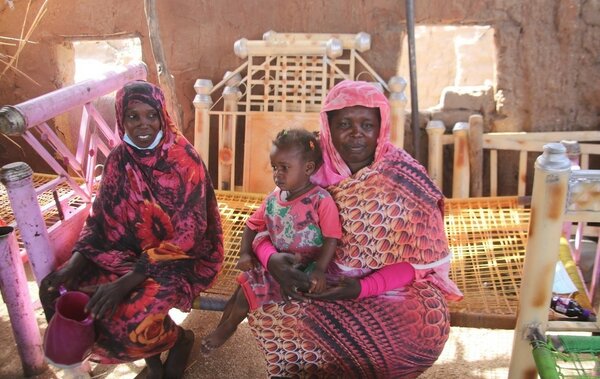
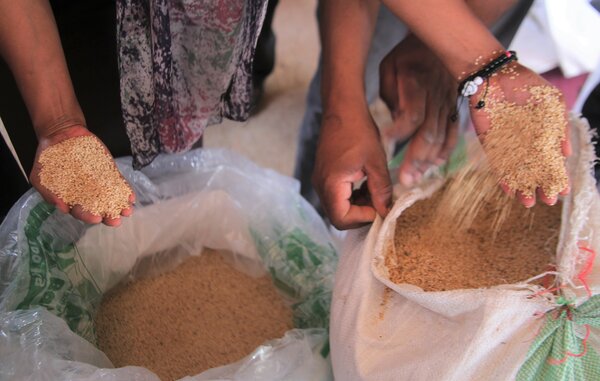
“We used to lose almost 30-40 percent of our harvest due to improper storage. Insects, rodents, and mould used to prey on our grains inflicting heavy losses on different crops. Following the training [on post-harvest losses], we are now sure of better quantity and quality of our grains,” says Amna, a sorghum and groundnut farmer in White Nile State.


